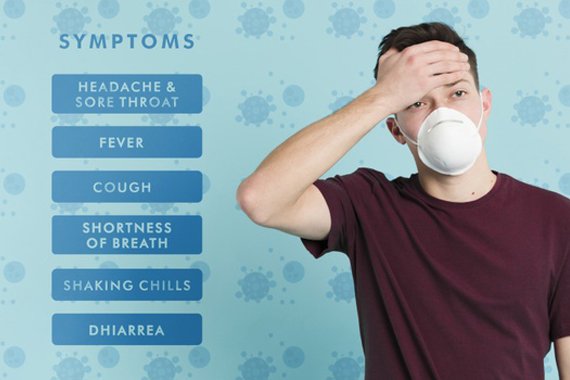Coronavirus is a whole family of viruses that have spikes on the surface that looks like a crown, hence the name. It can only make more of itself by coming in contact with any living cell.
Human coronaviruses most commonly spread from an infected person to others through the air by coughing and sneezing, close personal contact, such as touching or shaking hands. The viruses can also spread by touching an object or surface with the virus on it, then touching your mouth, nose, or eyes before washing your hands. In pregnant women, the more severe versions of MERS and SARS coronaviruses can be serious.
Coronaviruses are zoonotic, meaning they are transmitted between animals and people, according to the WHO. Several known coronaviruses are circulating in animals that have not yet infected humans. On December 31, 2019, the WHO China Country Office was informed of mysterious cases of pneumonia detected in Wuhan City in China’s Hubei Province. The novel coronavirus (2019-nCoV) was identified as the causative agent by Chinese authorities on January 7.
Symptoms of Coronavirus –
People are usually sick with a virus for 14 days before developing any symptoms. The most common symptoms of COVID-19 are fever, tiredness and dry – cough.
In more severe cases, it can lead to pneumonia, multiple organ failure, and even death. Most infected people show symptoms within five to six days.
However, infected patients can also be asymptomatic, meaning they do not display any symptoms despite having the virus in their systems.
Babies, older people and people with other medical conditions like asthma, diabetes or heart conditions are more prone to becoming seriously ill. They don’t have a strong immune system to fight the virus.
The doctor who warned about coronavirus died. Below is the timeline of how the disease progresses –
According to JAMA, on average, people became short of breath within five days of the onset of their symptoms. Severe breathing trouble was observed in about eight days.
However, an earlier study published in the Journal of Medical Virology on January 29 said that, on average, people who died did so within 14 days of the onset of the disease.
The New England Journal of Medicine, in a study published on January 31, also offered a look at how the coronavirus infection affects the body over time.
The study examined the medical data of a 35-year-old man, the first case of infection in the United States. The first symptom was a dry cough, followed by a fever.
On the third day of illness, he reported nausea and vomiting followed by diarrhea and abdominal discomfort on the sixth day. By the ninth day, he had developed pneumonia and reported difficulty breathing.
By the twelfth day, his condition had improved and his fever was subsiding. He developed a runny nose, however. On day 14, he was asymptomatic except for a mild cough.
According to local media reports, he sought care on January 19 and was discharged from the hospital in the first week of February.
Tedros Adhanom Ghebreyesus, WHO chief, told reporters on February 24 that statistics from China suggest recovery time for people with the mild disease is about two weeks. People with severe or critical diseases may take between three and six weeks to recover.
On February 28, Ghebreyesus said nations should prepare themselves for a potential pandemic, as countries aside from China now account for three-quarters of new infections.
On March 4, Ghebreyesus warned that a global shortage and price gouging for protective equipment was compromising countries’ abilities to respond to the epidemic, and called on companies and governments to increase production by 40 percent.
On March 11, the WHO chief characterized COVID -19 as a pandemic and expressed concern over the “alarming levels of spread and severity, and by the alarming levels of inaction”.
On March 13, Ghebreyesus said that Europe had become now the epicenter of the pandemic after reporting more cases and deaths than “rest of the world combined, apart from China”.
How to prevent Coronavirus –
1. Wash your hands often.
2. Cough into your elbow.
3. Don’t touch your face.
4. Keep a safe distance between others and yourself.
5. Stay at home if you can.
Treatment –
There are no specific medicine or vaccine to prevent or treat CO – VID 19 yet.
Medical Treatment –
If you develop a fever, cough, and have difficulty breathing, seek medical care quickly.
Testing and Countermeasures –
The Union Health Ministry’s war room and policy-making team in New Delhi consist of the ministry’s Emergency Medical Response Unit, the Central Surveillance Unit (IDSP), the National Centre for Disease Control (NCDC) and experts from three government hospitals. They are part of policy decisions to decide how coronavirus should be tackled in the country. A cluster-containment strategy is mainly being adopted, similar to how India contained previous epidemics, as well as “breaking the chain of transmission”. 15 labs across India led by the National Institute of Virology (NIV), Pune, are testing for the virus, with more labs being trained.
